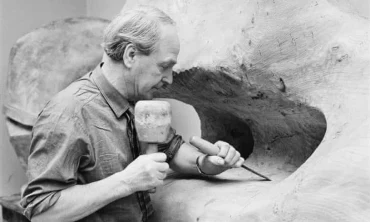
- 357 Lê Hồng Phong, P.2, Q.10, TP.HCM
- Hotline 1: 1900 7060
Hotline 2: (028) 3622 8849
Bài tập IELTS Reading - Cubism
Cubism

When the name of Picasso is spoken, the concept of ‘Cubism’ usually springs to mind. That this happens indicates just how deep and long-lasting has been its in;uence on the world, yet although many people know of the name ‘Cubism’, few can speak about it with any degree of conversancy. It is Georges Braque who is now credited as an equal pioneer in this revolutionary art movement, but claiming that these two artists alone created cubism oversimpli.es a very complex issue.
Defning Cubism itself is dif.cult. At its simplest, the three-dimensional object being painted can be considered broken into pieces, sometimes square or cube-shaped (hence the name). These are reassembled in less than coherent order, and often at different angles. They can overlap, and sometimes more than one view is presented at the same time, moving beyond the limits of a .xed observer. The terms ‘multiple viewpoints’ and ‘mobile perspectives’ are often used — that is, the subject is captured from different angles, at different times, with the corresponding images fused into a single picture.
Braque’s pre-war paintings began experimenting with this idea, which inevitably led to an association with Picasso, who had been dabbling also in rendering three-dimensional views into two-dimensional geometric shapes — for example, in his painting Young Ladies of Avignon — often labelled ‘proto-cubist’. Some even consider this painting to be the true beginning of Cubism itself, as it inspired Braque to follow the lead, developing the movement towards its trademark features. Access https://ieltsonlinetests.com for more practices page 10 Yet both artists were in;uenced by earlier painters, in particular, the later works of Cezanne. Cezanne was one of the .rst to divide the canvas into several views, as well as to begin presenting natural objects in geometric figures.
Paul Cezanne had died in 1906, but a year later several museums exhibited his paintings in a retrospective of the artist’s life. Inevitably, young painters in the Parisian art scene, including Picasso and Braque, would have seen these. Whilst not yet fractured into facets or cubes, Cezanne occasionally implanted an underlying geometry—for example, in one of his most famous (and un.nished) paintings, The Bathers. This work breaks tradition in its un;attering portrait of the women, whose naked forms are rendered in sharp symmetry, also forming a triangular pattern with the river and trees. It is said to have inspired Picasso’s very similarly styled work, mentioned previously.
Moving beyond those early years of Cubism, many other artists were exploring the same idea, but taking it in individual directions. They are often unfairly considered as having played less signi.cant roles simply because they did not adhere to the strict perspectives of Braque or Picasso. Yet, conceivably they could have evolved their own awareness of Cubism more from Cezanne’s pervading and almost universal in;uence on the Parisian art scene of that day, meaning that they must now be considered true innovators in their own right. Juan Gris, for example, produced many interesting works, yet now remains little regarded. Interestingly, being a compatriot of Picasso, the two artists became personally acquainted, to the extent that Gris painted his well-known Portrait of Picasso, now regarded as one of the best examples of the Cubist style.
Gris ventured beyond the monochromatic (or single family of colours) employed by Picasso and Braque. He combined vibrant hues in interesting and sometimes unusual combinations, such as in his still life, Newspaper and Fruit Dish. Similarly exploratory were the Orphic Cubists (as they would later become known), who moved further towards abstraction, but with Gris’s similar use of bright colours. These were used to convey meaning but blended in a way that went beyond the physical subject. Its main proponent was the Frenchman, Robert Delaunay, who, together with his wife, regularly exhibited in Parisian salons with increasingly nonrepresentational forms. His Simultaneous Windows is barely recognisable as a window—just a blend of prismatic hues with one prominent square, giving a hint of three-dimensionality.
Léger also followed a more personal form of Cubism. As with most of his generation, he had seen the Cezanne 1907 retrospective, which enkindled interest in experimentation with geometric forms. This eventually led to the completely abstract, in which tubes, cones, and cubes, are all splayed on the canvas in bold primary colours — seen, for example, in his Railway Crossing. Merc, in spite of its non-representational quality, is the suggestion of the harsh mechanisation and alienation of modern life, a theme which the artist’s experiences in World War One only accentuated, and which pre-dates similar trends (such as pop art) by decades. Clearly, Cubism was a complex art movement, and names such as Analytical, Synthetic, and Access https://ieltsonlinetests.com for more practices page 11 Orphic Cubism are constructs which were invented long after the events and artworks which they attempt to describe. These names appear to give a coherent order to what was actually a collective movement in which many individuals contributed. Among all this confusion, one does not doubt that the early years of last century were a fascinating period in the Parisian art scene.
Questions 27-31
Answer the questions.
Choose the correct letter, A-F, for each answer.
NB You can use an answer more than once.
Which painter
A Braque
B Cezanne
C Delaunay
D Gris
E Léger
F Picasso
27 led a new abstraction movement?
28 was the most influential?
29 was affected by a global conflict?
30 is inevitably linked with an art movement?
31 was married?
Questions 32-37
Answer the questions.
Choose the correct letter, A-F, for each answer.
NB You can use an answer ONLY once
A Newspaper and Fruit Dish
B Portrait of Picasso
C Railway Crossing
D Simultaneous Windows
E The Bathers
F Young Ladies of Avignon
Which painting is
32 a confusing abstraction in many colours?
33 a darker view, ahead of its time?
34 probably the first of its kind?
35 an intriguing and multi-chromatic view?
36 very representative of its type?
37 an early painting which influenced another?
Questions 38-40
Choose the correct letter, A, B, C, or D.
38 The Cezanne Retrospective
A was attended by Cezanne.
B showed his Cubist paintings.
C was attended by very many people.
D influenced an artist to move to non-representational style.
39 Many Cubist innovators
A preferred still-life paintings.
B favoured monochrome.
C invented names for their styles.
D were not adequately recognised.
40 Cubism
A is fairly easily explained.
B has cubes in incoherent order.
C shows different views of a subject.
D was created by Picasso and Braque.
Answer key
27 C 28 B 29 E 30 F 31 C
32 D 33 C 34 F 35 A 36 B
37 E 38 D 39 D 40 C
THƯ VIỆN LIÊN QUAN

Reading là một trong bốn phần thi bắt buộc của bài thi IELTS, đây cũng được xem là phần thi thử thách nhất để chinh phục được band điểm cao. Hãy...

Bài viết cung cấp cho đọc giả Bài tập Reading part 3 - Chủ đề: Why fairy tales are really scary tales - Có đáp án

Bài viết cung cấp cho đọc giả Bài tập Reading part 2 - Chủ đề: The Desolenator: producing clean water - Có đáp án

Bài viết cung cấp cho đọc giả Bài tập Reading part 1 - Chủ đề: Henry Moore (1898-1986) - Có đáp án
Hoặc gọi ngay cho chúng tôi:
1900 7060
 | Chính sách bảo mật thông tin | Hình thức thanh toán | Quy định chung
| Chính sách bảo mật thông tin | Hình thức thanh toán | Quy định chung
Giấy chứng nhận đăng ký doanh nghiệp số 0310635296 do Sở Kế hoạch và Đầu tư TPHCM cấp.
Giấy Phép hoạt động trung tâm ngoại ngữ số 3068/QĐ-GDĐT-TC do Sở Giáo Dục và Đào Tạo TPHCM cấp